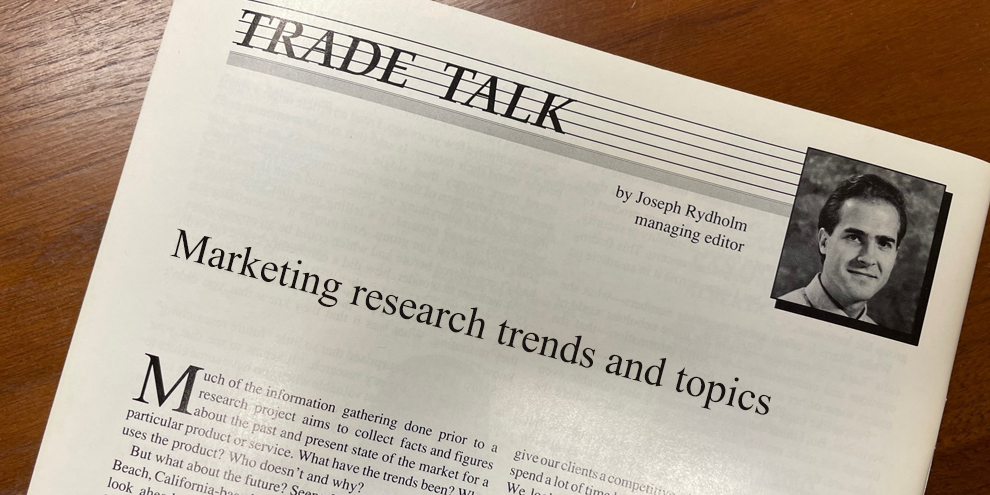Though two users of your product or service may share a host of lifestyle and demographic attributes such as income, age, hobbies, religious and educational background, etc., they may have completely different reasons for using your product.
But if you can identify the common attributes of the people who use your product or service, you have a better chance of developing more efficient advertising and other marketing messages. By separating the wheatfrom the chaff, you'll target your efforts at the people you really want to reach and avoid those you don't. One way to do that is by using psychographics, which allows you to segment consumers into distinct groups that share common interests, opinions, and outlooks.
Psychographics - and the many studies and surveys it encompasses - is the subject of a new book from Rebecca Piirto, "Beyond Mind Games: The Marketing Power of Psychographics." In her introduction, Piirto says that the book is designed to demystify psychographics and make it "more accessible for managers, executives, creatives, and other nonstatisticians."
Through interviews with researchers in several industries who use psychographics and with the pioneers who helped shape it, Piirto follows the evolution of psychographics from VALS to PRIZM, taking in-depth looks at several approaches and the ways they have been applied to meet research needs.
Very simple
The philosophy behind psychographics is really very simple: divide and conquer. By blending the emotion-mining approach of qualitative research with the statistical measurements of quantitative research, psychographics aims to segment markets by tapping into the inner workings of various groups of people, examining their emotional make-up, lifestyles, and their demographic characteristics. Typically, these segments are given names that encapsulate their defining aspects, names such as "strivers," "worried traditionalists," and "hopeful loyalists."
Psychographics has many uses, and Piirto does a good job of exploring them and explaining many of the systems that are available in each application. Some are used to deconstruct local broadcast markets, some to segment international markets, and others are applied to advertising, packaged goods, and retailing. Within each area, Piirto looks at the assumptions and philosophies underlying the various methods so that readers can decide which approach might work best for them.
The early chapters chronicle the efforts of pioneers such as motivational researcher Ernest Dichter, whose work in uncovering the unconscious emotional reasons why consumers choose a product paved the way for psychographics. Piirto also offers interesting examples of how the methods have been applied. For instance. Campbell Soup Company is one firm that seems to be using psychographics to its fullest advantage, by identifying core consumers and then zeroing in on them to find out what keeps them buying.
One of the most bizarre examples concerns work done by researchers at the D'Arcy Masius Benton & Bowles ad agency. Using projective techniques, they discovered that a group of downscale women preferred using Raid spray to kill roaches even though a competing product, Combat - which is placed in cupboards-was cleaner and required less effort. It seems the women, many of whom were involved in common-law relationships, got a vicarious thrill from seeing the roaches - which they likened to the men they were living with - die.
Little uniformity
One problem with psychographics is that there is little uniformity among the approaches available, so the researcher who is considering using a psychographic method is often faced with information overload. Everyone seems to have their own system, with definitions and guidelines that differ depending on what kind of audience the system is trying to segment. And because of the competition, the creators and/or proponents of each method offer justification that theirs is the one that is the most accurate, the most truthful.
Piirto helps alleviate some of the confusion by offering a final chapter titled "Advice from the Experts" that summarizes the key points of the book. If you're new to the world of psychographics, or if your company or organization has little experience with the method, I would suggest reading this chapter first because it offers several important thoughts to keep in mind as you read through the book. Some of these guidelines include: understand the underlying consumer trends; identify the underlying motivators; use whatever technique you 're most comfortable with to get a psychographic profile of all potential customers; when entering large foreign markets, market to the similarities, but make sure you understand and never underestimate the differences.
("Beyond Mind Games: The Marketing Power of Psychographics," by Rebecca Piirto, 263 p., is available for $34. 50, plus $4 for shipping & handling, by writing Ameri¬can Demographics Books, P.O. Box 68, Ithaca, NY, 14851, or by calling 800-828-1133.)
